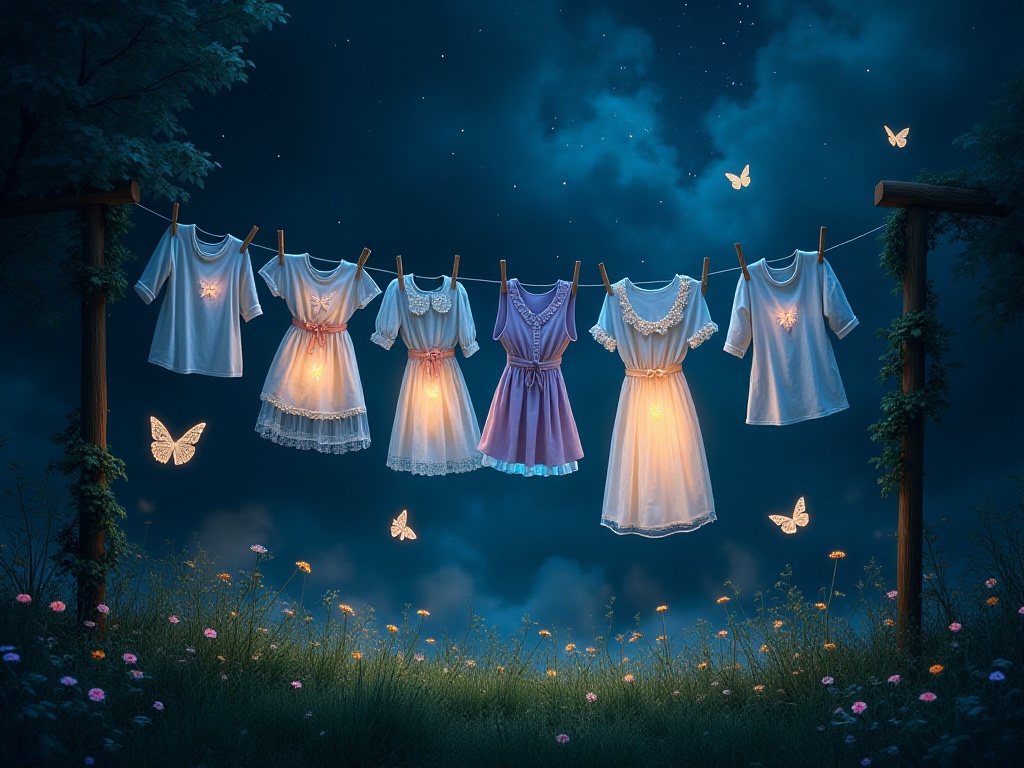Getting Straight to the Point
As a newly employed working person, I worry about what to wear every day. New clothes become wrinkled after just a few wears, I'm afraid to wash expensive clothes improperly, and sometimes clothes mysteriously develop strange odors. After years of exploration and practice, I've developed a set of practical clothing care methods that I'd like to share with everyone today.
When I previously worked as customer service for an e-commerce platform, I dealt with various clothing care issues daily. Some customers complained that their clothes lost shape after just a few wears, while others didn't know how to handle expensive fabrics. Through consulting with professionals and repeated experimentation, I gradually mastered some very effective techniques.
Washing Strategy
Let's start with the most basic issue: how to properly wash clothes. Like many people, I used to think clothes needed washing after each wear - looking back, that was quite foolish. Excessive washing not only wastes water and electricity but also accelerates clothing wear. Now I determine washing frequency based on the fabric and wear conditions.
For example, dress shirts can be worn three or four times before washing if you wear an undershirt beneath them. I now wear a moisture-wicking undershirt with my work shirts, which keeps the shirt clean and reduces washing frequency. As for suit jackets, unless they're visibly dirty or smell, they usually only need a gentle brush with a professional soft brush after each wear.
Water temperature selection is another issue many people overlook. Except for items like towels and bedding that need hot water disinfection, cold water is recommended for washing other clothes. I once conducted an experiment with two identical T-shirts - one washed in hot water, one in cold. After ten washes, the hot water-washed shirt showed noticeably more color fading and reduced elasticity.
Regarding detergent usage, here's a money-saving tip. I used to think more detergent meant cleaner clothes, but this not only wastes money but also leaves detergent residue on clothes. Later I discovered that using half the recommended amount is completely sufficient. For particularly dirty items, adding some baking soda to the detergent improves cleaning effectiveness.
My personal favorite is white vinegar - it's truly the universal solution in clothing care. Vinegar not only softens clothes like fabric softener but also removes odors. Most importantly, it's environmentally friendly and doesn't cause water pollution. I now add half a cup of white vinegar during the final rinse cycle - clothes dry without any vinegar smell and feel especially fresh.

Stain Removal Tips
When it comes to stain removal, this is my specialty. Remember one iron rule: the sooner you treat stains, the easier they are to remove. Once at an important business dinner, I accidentally spilled red wine on my white shirt and nearly cried. Fortunately, I immediately blotted up the excess wine with napkins, then ran to the bathroom and applied a paste made of baking soda and water to the stain. After normal washing when I got home, there was no trace of the wine stain when I wore the shirt the next day.
For secondhand clothes or items with odors, I have a secret formula. Add two tablespoons of baking soda and half a cup of 3% hydrogen peroxide to the bottom of the washing machine, along with regular detergent. I learned this recipe from a dry cleaner owner, and it works exceptionally well. Once I found a coat I really liked at a secondhand market, but it had a strong smoke smell. After washing it twice with this method, the smell was completely gone.
Different types of stains require different treatment methods. Oil stains are best treated with dish soap first, as it's better at removing oil than laundry detergent. For ink stains, soak in milk - the proteins in milk will absorb the ink. Lipstick marks can be treated by spraying with hairspray, letting it dry, then wiping with a wet wipe. I've personally tried all these methods with good results.

Drying Techniques
Proper drying methods can make clothes last longer, something I've experienced firsthand. Most garments are best dried naturally in a ventilated, shaded area to avoid color fading and fabric damage from direct sunlight. I've hung a special shade on my balcony so I can safely dry clothes even on sunny days.
Heavy knit items like sweaters should never be hung to dry as they can easily lose shape. I lay sweaters flat on a drying rack with a clean towel underneath. For particularly expensive cashmere sweaters, I roll them in a towel and gently squeeze, then lay them flat to dry, which maximizes fabric protection.
Did you know you can use a salad spinner to dry clothes? This was my accidental discovery of a wonderful tool. I once had a delicate lace dress that was too fragile for the washing machine, and I was afraid hand-wringing would damage it. On impulse, I tried the salad spinner - it worked amazingly well! Now I use this method for all my expensive underwear and lace garments.
When hanging clothes to dry, pay attention to color combinations. Dark clothes should be dried separately from light ones, especially new jeans which tend to bleed color in the first few washes. I hang new jeans separately until they stop bleeding color before drying them with other clothes.

Storage Tips
Clothing storage is truly a science. Different fabrics need different storage methods to maximize protection. Sweaters and knits that easily lose shape are best folded and stored in drawers. I use transparent storage boxes to categorize them, which both protects the clothes and makes them easy to find.
Suits and dress shirts must be hung on quality hangers. I previously tried to save money using cheap plastic hangers from the supermarket, but the clothes quickly lost shape. Later I invested in some wooden hangers - though more expensive, they've kept my clothes in good shape for over two years now.
Tie storage is also important. I've seen many people roll ties into balls and stuff them in drawers, which easily deforms them. The correct method is to roll ties into cylinders and store them upright in special storage boxes. If you don't have storage boxes, you can repurpose old tissue boxes.
Seasonal storage is a headache for many people. My method is to clean and completely dry all clothes before storage. For expensive outerwear like down jackets and coats, I use vacuum compression bags and add moth protection and desiccants. This not only saves space but prevents mold and moth damage.
Special attention should be paid to leather clothing storage. Leather clothes should be kept in dust covers and hung in ventilated areas. For long-term storage, it's recommended to treat them with professional leather conditioner first to prevent cracking. I've maintained a leather jacket this way for four years, and it still looks new.

Advanced Care
If you find ironing troublesome, I really recommend getting a handheld steamer. I rarely use traditional irons anymore because steamers are not only more efficient but also safer. Taking a small steamer when traveling allows you to keep clothes crisp anytime. Plus, steam can remove odors from clothes - two benefits in one.
When it comes to clothing care, mending skills are essential. I now always carry a small sewing kit and immediately repair any loose threads or small holes I find. I used to think mending was too much trouble, but small problems become big ones if ignored, ultimately leading to throwing clothes away. Now that I've mastered some simple mending techniques, I not only save money but feel a great sense of accomplishment.
Leather care is also important. Leather bags and shoes should be regularly treated with professional leather conditioner to prevent cracking and mold. Before wearing leather shoes in the rain, spray them with waterproofing spray, and after returning home, absorb moisture with newspaper and let them air dry naturally. These small details can greatly extend the life of leather goods.
Finally, here's one more practical tip: if clothes have static electricity, you can lightly pat them with damp hands or spray them with diluted fabric softener. If you're out without these tools, applying hand cream to your hands and lightly running them over the clothes can also reduce static. This method is especially useful in winter.
Through years of exploration and practice, I've deeply realized that clothes can last a very long time with proper care. Moreover, well-maintained clothes not only feel comfortable but can boost confidence. I hope these experiences help everyone keep their clothes looking fresh and new!
Related articles




